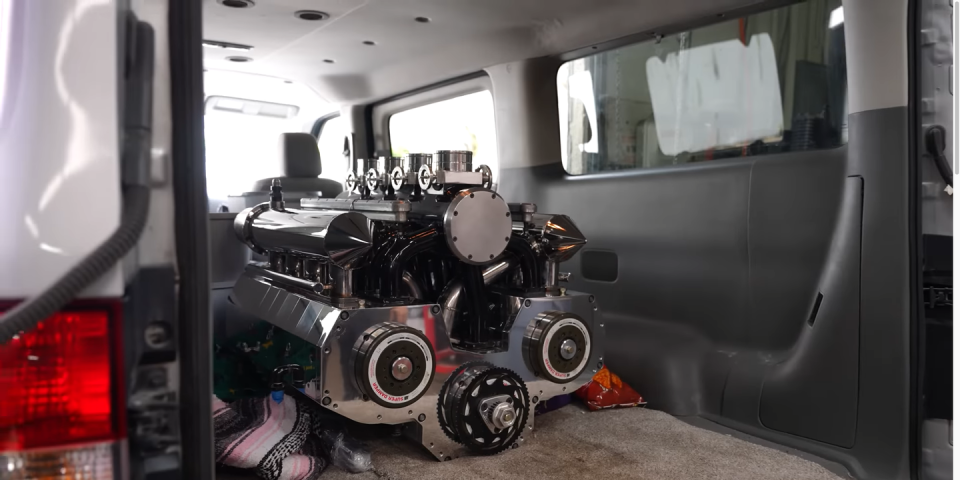This 12-Rotor Rotary Engine Is Wild

Over-the-top rotary builds are an enthusiast tradition. Because so few rotary cars have been made, the limits of the engine type haven't been fully exploited by automakers. It's been tuners who have built us big turbo rotaries, four-rotor engines, and even six-rotor builds. But this one may trump them all. Someone has built a twelve-rotor engine, and it's as ridiculous as it sounds.
It was Tyson Garvin of Apex Manufacturing and Design that conceived of and executed the idea, but it came to our attention through the latest Rob Dahm video. Dahm, no stranger to wild rotary cars himself, brings Garvin and his engine into the shop for a deep dive. The engine is giant, gorgeous, and utterly absurd. But it's built for an absurd task: Speed boat racing.
Garvin and the team, like most speed boat racers, used Big Block Chevy engines as their foundation. But, he said, no matter how you build one, there are weak points that can't be avoided.
"We had done about as much as you can do with a Big Block Chevy," Garvin said. "If you bought the best parts and you were the best tuner, there are still parts that'll break, like the valve springs. You're bending metal back and forth and they will break, no matter how you build it."
His solution was unconventional.
"A rotary has no known true failure," he said. "Like, the tip seals can wear our, stuff can wear out, but there's nothing that'll break for the fun of it like a Big Block Chevy has. You can only get so much power out of a Big Block Chevy for hours on end of wide-open [throttle], so we started measuring a Big Block Chevy and seeing how many rotors we could fit in the spot. In the end, we came up with this design, which is the exact shape of a Big Block Chevy[...] I basically made it to replace my boat engine."
The end result is an engine that is giant, beautiful, and intricately designed. One set of rotors spins backwards both to help balance the harmonics and to make the exhaust and intake setup symmetrical from side to side. The current setup fires the back and front rotors simultaneously so that there's no need for counterweights, though Garvin notes that the flexibility of the rotor setup means you can run just about any timing you want. You just have to balance it.
Unfortunately, the size of it has presented some challenges that don't appear to be fully solved. While the engine has run before, it ran with a carburetor that choked it out before peak power. Garvin says he didn't have engine control software available that could manage 24 individual timings for 24 injectors, and the twin V-12 engine control systems presented some limitations. Still, he got one impressive number out of the thing: the engine made 800 lb-ft of torque at 2000 rpm, and can spin past 9000 rpm.
Cooling and airflow will surely present challenges, but Garvin seems up to it. And there is a legitimate reason behind the rotary, too. In addition to the lack of failure points—you don't need valves on a rotary—the need for it to run at wide-open-throttle for hours sounds like solid ground for a rotary design, which usually works best at high rpm. Still, now that it's in Rob Dahm's hands, we expect it to end up in a pretty interesting car build. When that happens, we'll be sure to update you.
You Might Also Like

 Yahoo Autos
Yahoo Autos 